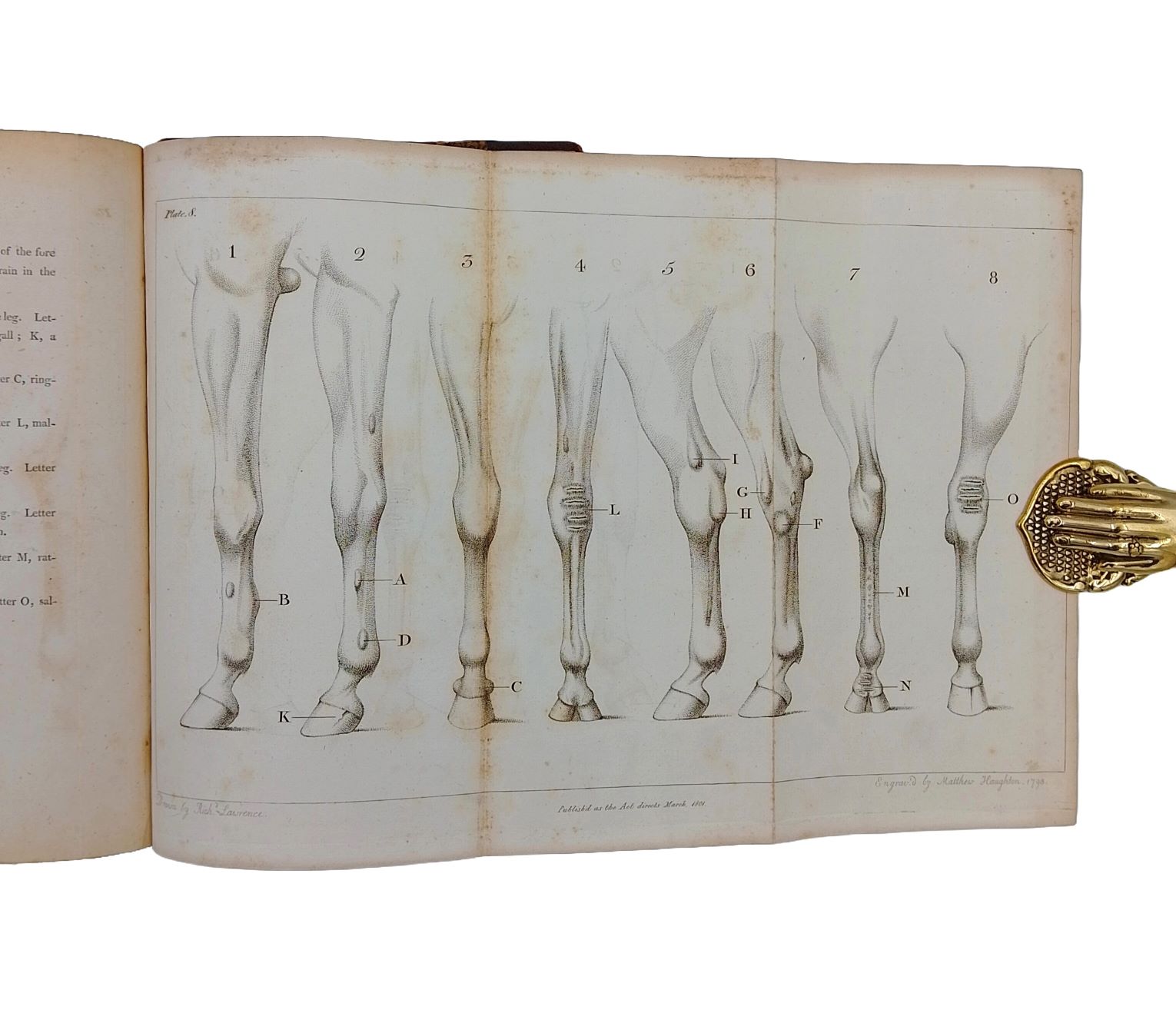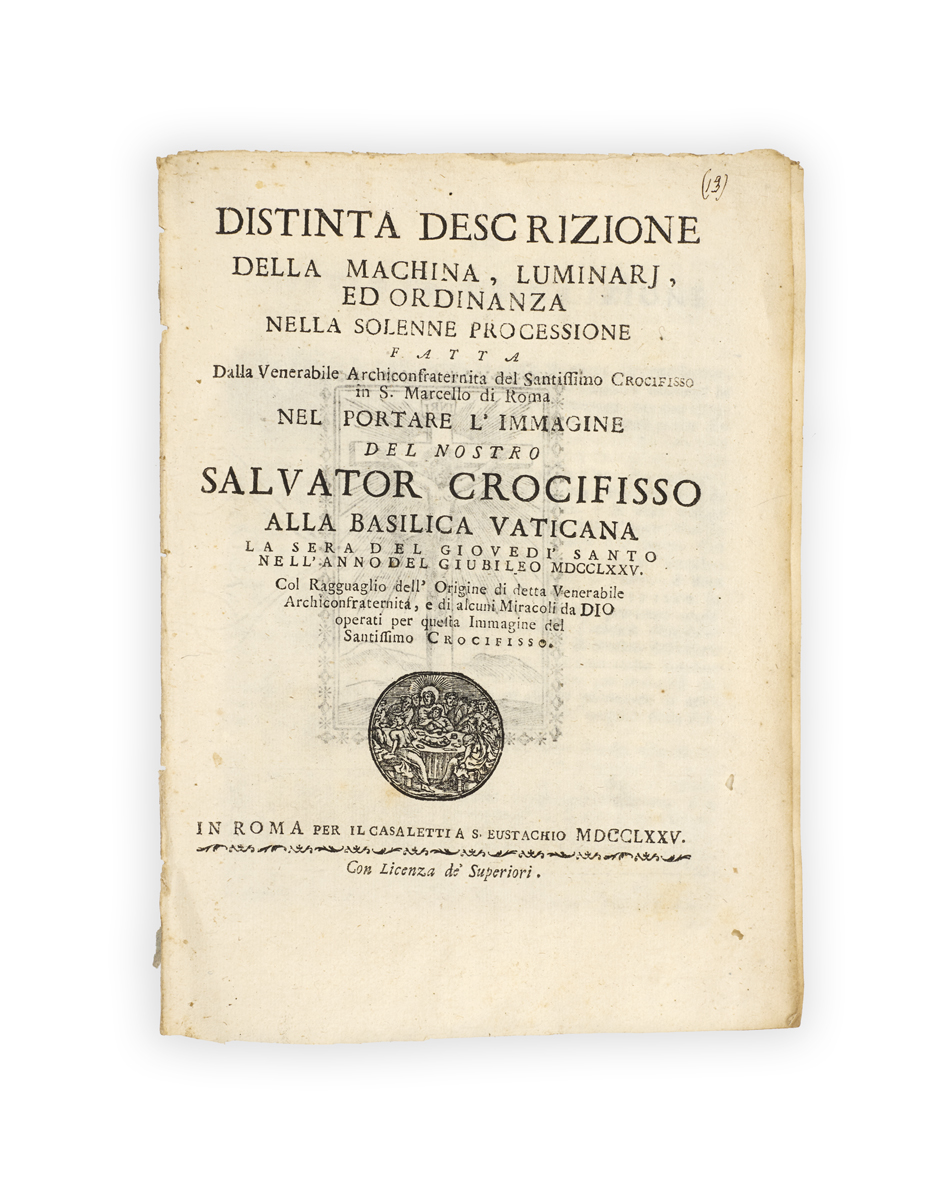
LAWRENCE, Richard.
An Inquiry into the Structure & animal Oeconomy of the Horse, comprehending the Diseases to which his Limbs & Feet are subject, with proper Directions for Shoeing, and pointing out a Method for Ascertaining his Age until his twelfth Year, to which is added an Attempt to explain the Laws of his progressive Motion on mechanical and anatomical Principles … second Edition, revised and corrected.
Birmingham, executors of T.A. Pearson for the author, and sold by Knott & Lloyd, and in London, G. & W. Nicol and L.B. Seeley, [1803].
8vo, pp. [2], [v]-xxiv, 224, with 17 stipple-engraved plates (of which 13 folding) and 15 ff. explanatory text; perhaps without half-title; a little spotting to early leaves and plates, very short marginal tear to P8; a very good copy in contemporary half red straight-grained roan with non-pareil marbled sides, spine gilt in compartments and lettered directly in one, edges speckled red, sewn on 3 sunken cords; rubbed, spine lightly sunned, front free endpaper a little loose; armorial bookplate of Richard Brinsley Sheridan to upper pastedown.

Added to your basket:
An Inquiry into the Structure & animal Oeconomy of the Horse, comprehending the Diseases to which his Limbs & Feet are subject, with proper Directions for Shoeing, and pointing out a Method for Ascertaining his Age until his twelfth Year, to which is added an Attempt to explain the Laws of his progressive Motion on mechanical and anatomical Principles … second Edition, revised and corrected.
Second edition of the treatise on farriery and equine anatomy by Lawrence, one of the first students of the Veterinary College. A resident pupil from January 1793 and employed as a surgical assistant to the College’s infirmary the following year, Lawrence complains of the still very much amateur nature of farriery in England, writing that ‘the necessity of long study in anatomy, pathology, and the composition of drugs, to qualify a practitioner in medicine, is universally acknowledged, and as the horse exists by similar laws, and is subject to many of the diseases incident to mankind, it cannot require much penetration to discover that studies of the same nature must be absolutely requisite to constitute a good farrier … it would seem that the science of farriery has been considered as a natural gift, and not in the least dependant on the tedious process of medical inquiry and investigation; for every blacksmith, groom, and stable boy, not only conceives himself, but is often believed by his employer to be fully competent to the important task of curing diseases, of the nature of which he is totally ignorant … consonant to this was the practice of farriery, until the establishment of the Veterinary College took place … the treatises written on the subject before that period, were found to be so fallacious in the description of diseases, as well as in the proportions of drugs prescribed, that it was judged necessary to begin de novo’ (pp. viii-xi).
Notable is his chapter On Progression, with observations on the motion of the horse which would later be confirmed by photography.
From the library of the satirical playwright, poet, and politician Richard Brinsley Sheridan (1751-1816).
Not in Dingley (cf. 390 for the first edition); not in Mellon; not in Dejager.

